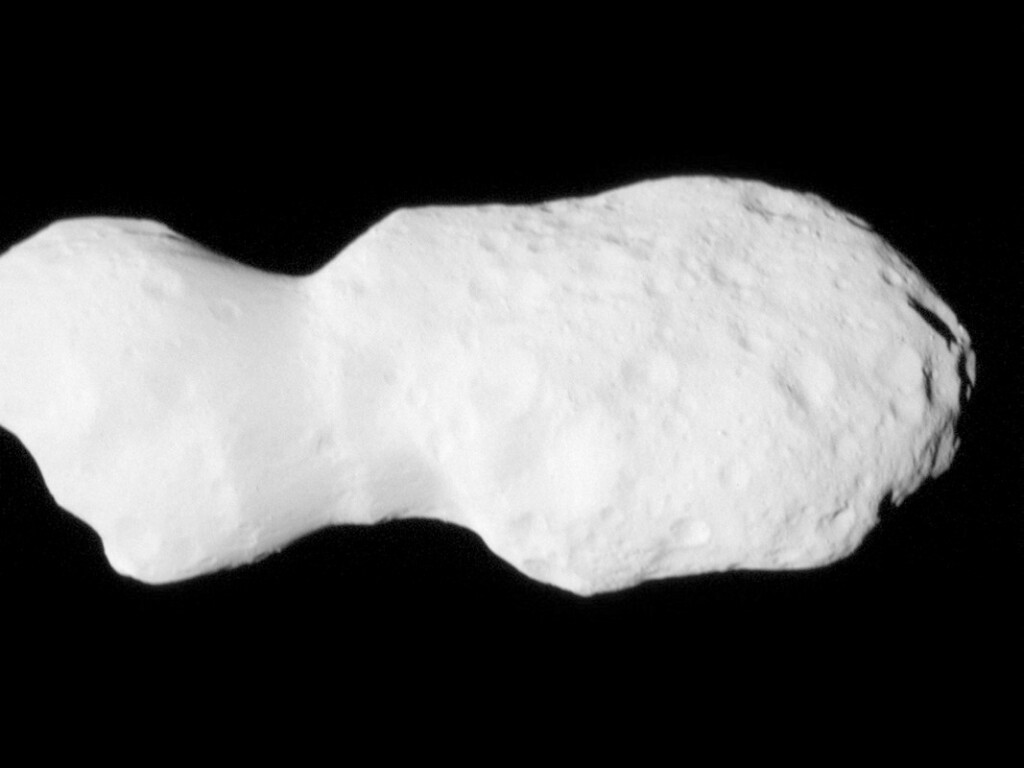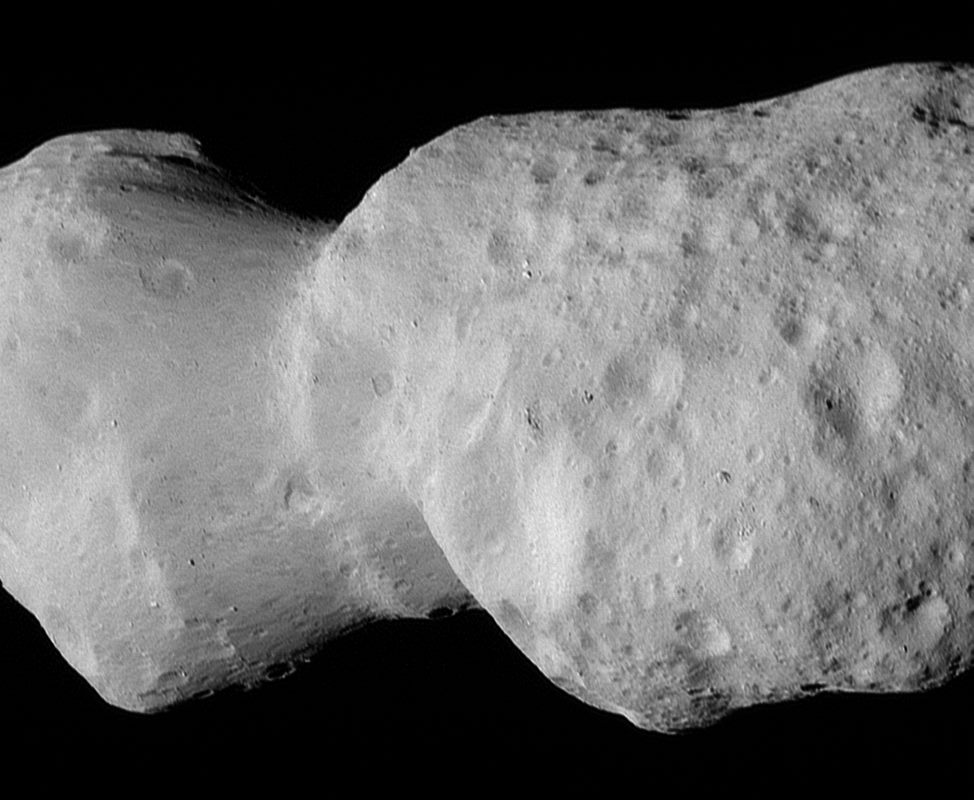 An artist’s impression of NASA’s Lucy space probe. Scientists have flown a spacecraft by an odd 5-mile-long asteroid – credit, NASA, via SWNS
An artist’s impression of NASA’s Lucy space probe. Scientists have flown a spacecraft by an odd 5-mile-long asteroid – credit, NASA, via SWNSAsteroids are hugely significant features of our solar system, and a NASA space probe just sent back a photo of one as it passed close-by, revealing its odd, peanut-like shape.
NASA’s Lucy space probe is on a 12-year journey to study Jupiter’s Trojan and main-belt asteroids, aiming to uncover insights into the early solar system’s formation and planetary origins.
On its way, she passed within approximately 600 miles (960 km) of the asteroid Donaldjohanson on April 20th.
The bizarrely-shaped object has been compared to a lumpy bowling pin by space-watchers, with NASA describing it as looking like two ice cream cones, and GNN, being based in Virginia, deciding it was more peanut-shaped.
The space rock is so large that Lucy could not capture its entirety in its first set of images beamed back to Earth.
It will take up to a week to downlink the remainder of the encounter data from the spacecraft, which should give a more complete picture of the asteroid’s overall shape. Donaldjohanson is approximately 135 million miles from Earth.
 An image of asteroid Donaldjohanson captured by NASA’s Lucy space probe – credit, NASA via SWNS
An image of asteroid Donaldjohanson captured by NASA’s Lucy space probe – credit, NASA via SWNS An image of asteroid Donaldjohanson captured by NASA’s Lucy space probe – credit, NASA via SWNS
An image of asteroid Donaldjohanson captured by NASA’s Lucy space probe – credit, NASA via SWNS“In its second asteroid encounter, NASA’s Lucy spacecraft obtained a close look at a uniquely shaped fragment of an asteroid that formed about 150 million years ago,” a statement from NASA read.
“The asteroid was previously observed to have large brightness variations over a 10-day period, so some of Lucy team members’ expectations were confirmed when the first images showed what appeared to be an elongated contact binary (an object formed when two smaller bodies collide).”
However, the team was surprised by the odd shape of the narrow neck connecting the two lobes.
ALSO CHECK OUT: Aging Voyager 1 Restarts a Radio it Hasn’t Used Since 1981–Prompted from 15 Billion Miles Away
Hal Levison, principal investigator for Lucy at Southwest Research Institute, said that Donaldjohanson reveals how asteroids are capable of being far more complex than simple space rock debris.
“As we study the complex structures in detail, they will reveal important information about the building blocks and collisional processes that formed the planets in our Solar System,” Levison said.
MORE STORIES LIKE THIS: Largest-Ever Planetary Spacecraft Set for Launch Towards Jupiter to Study the Ocean Moon of Europa
Lucy will spend most of the remainder of 2025 traveling through the main asteroid belt and should encounter the mission’s first main target, the Jupiter Trojan asteroid Eurybates, in August 2027.
“These early images of Donaldjohanson are again showing the tremendous capabilities of the Lucy spacecraft as an engine of discovery. The potential to really open a new window into the history of our solar system when Lucy gets to the Trojan asteroids is immense,” said Tom Statler, program scientist—one of the highest roles—for the Lucy mission.
WATCH an explainer video from NASA…
SHARE This Story Of An Interplanetary Close-up With A Giant Asteroid…
Source link

